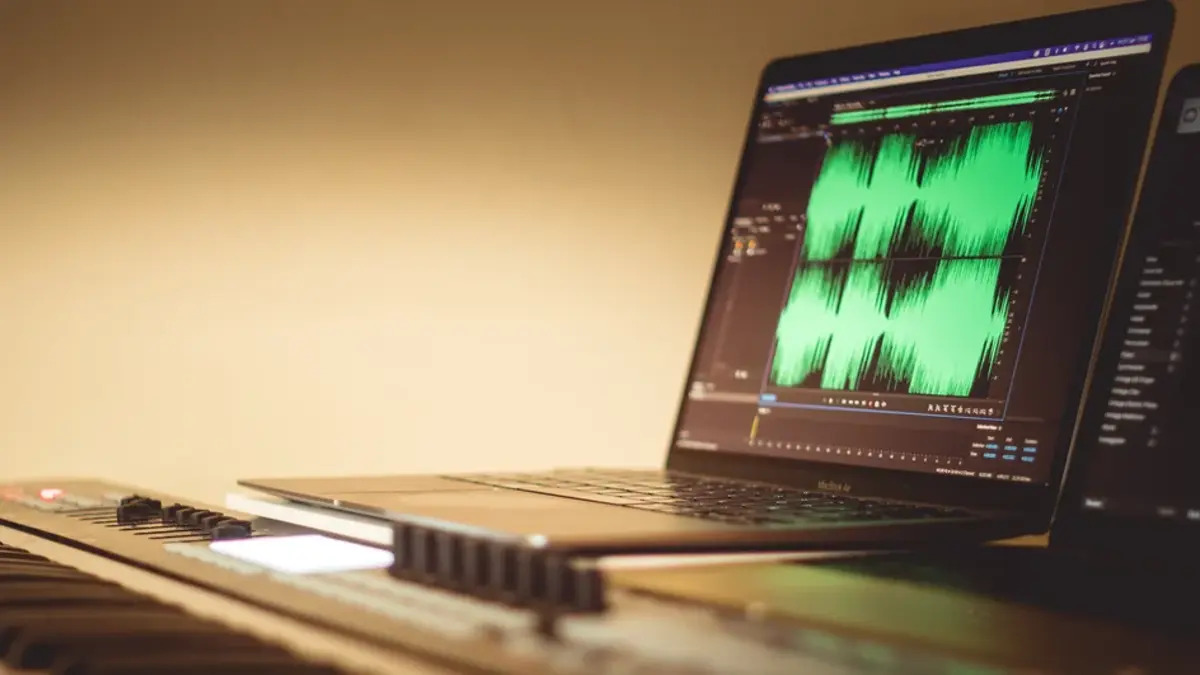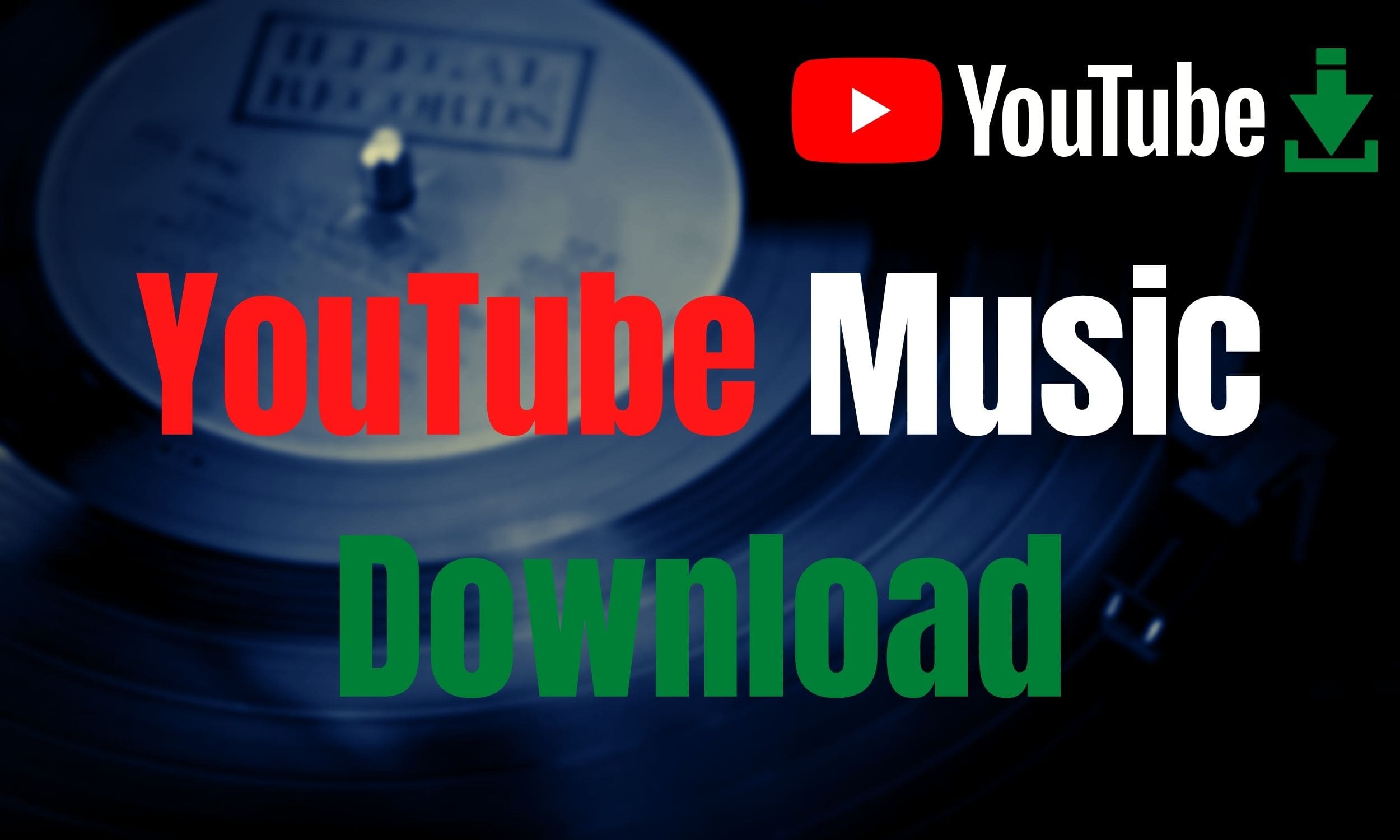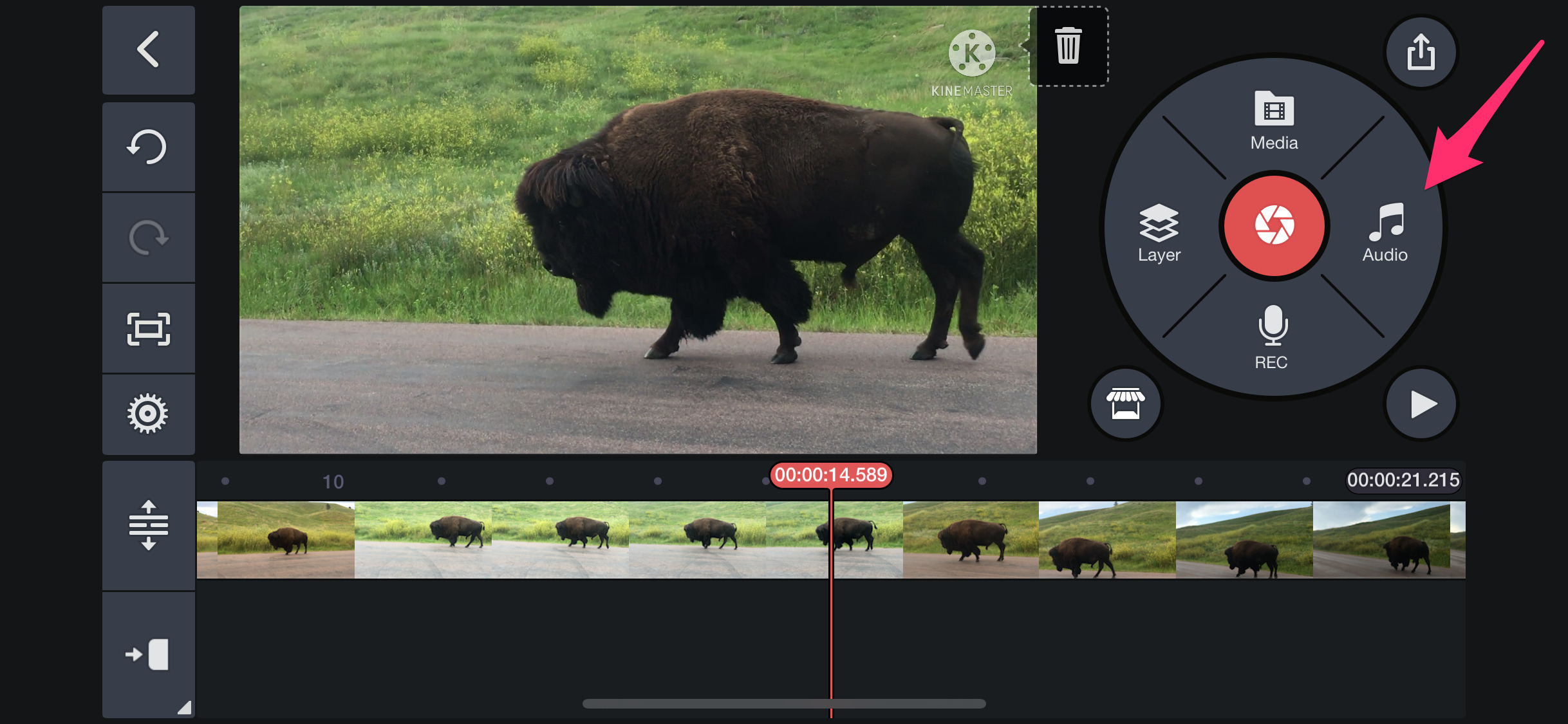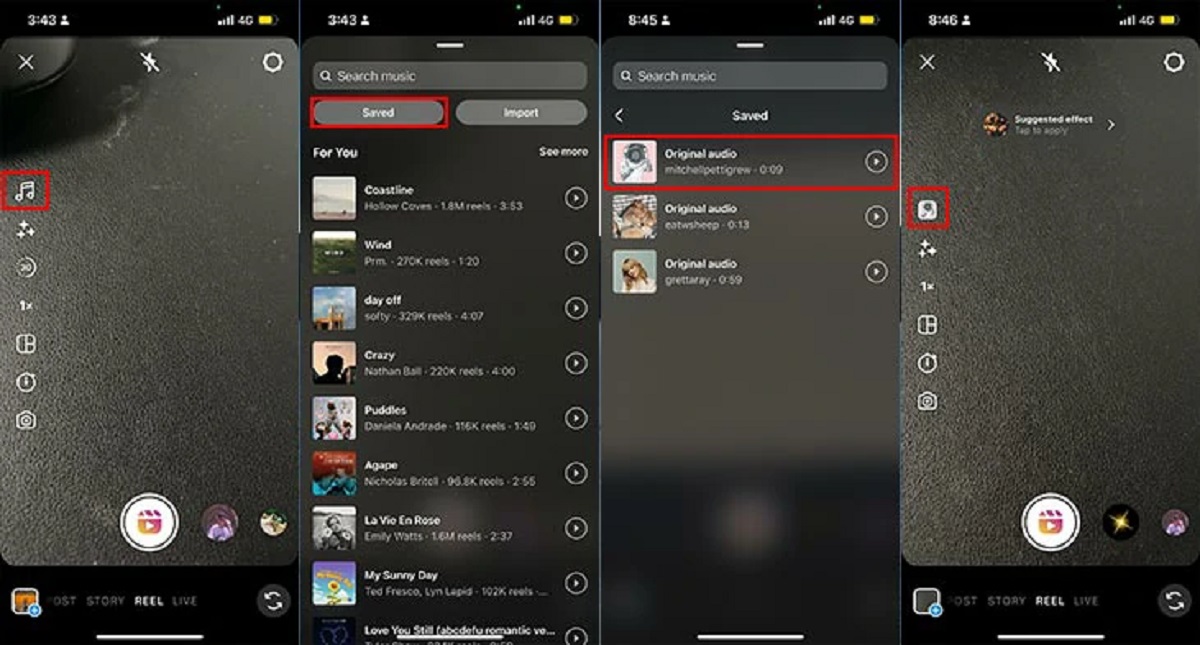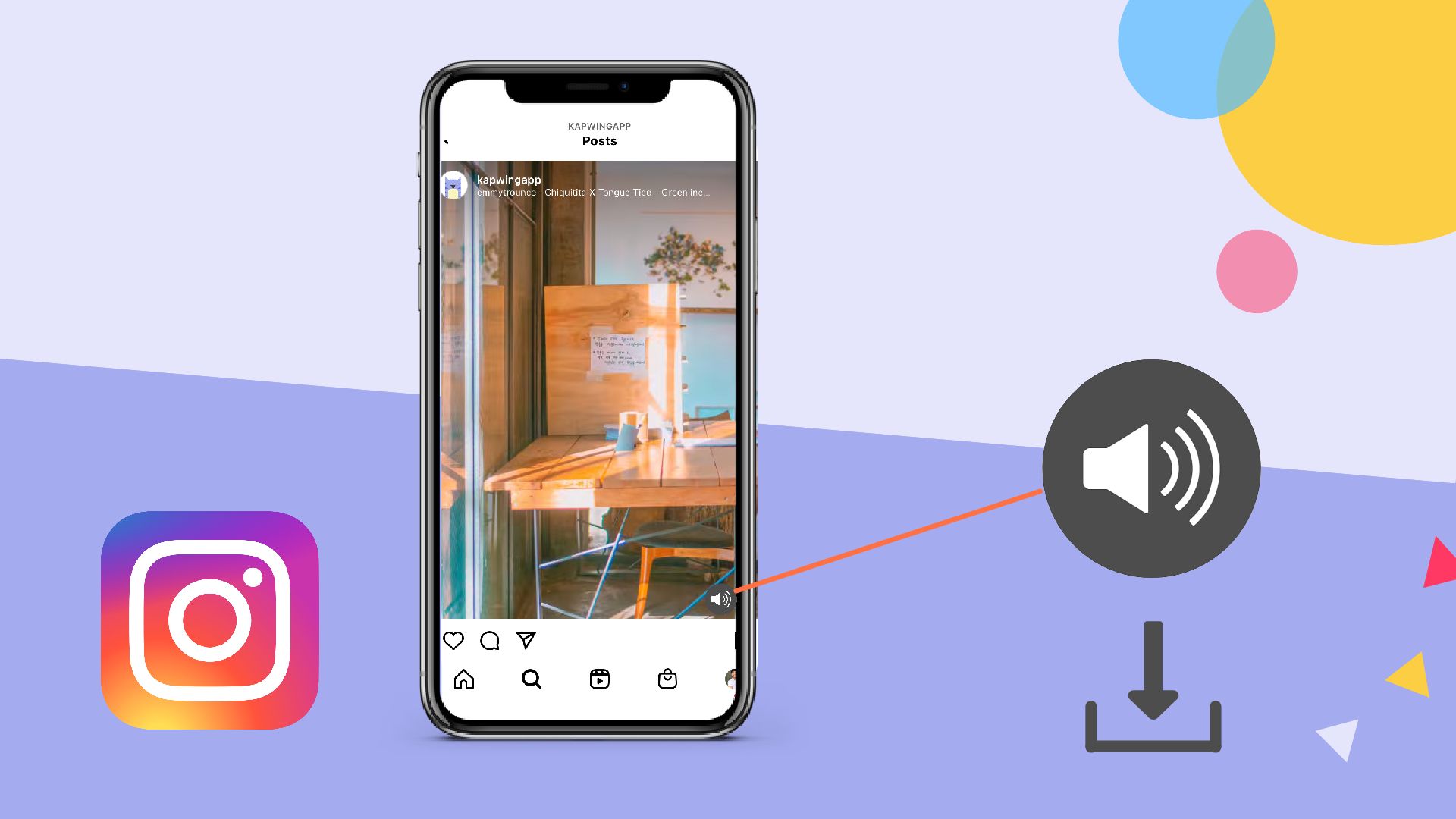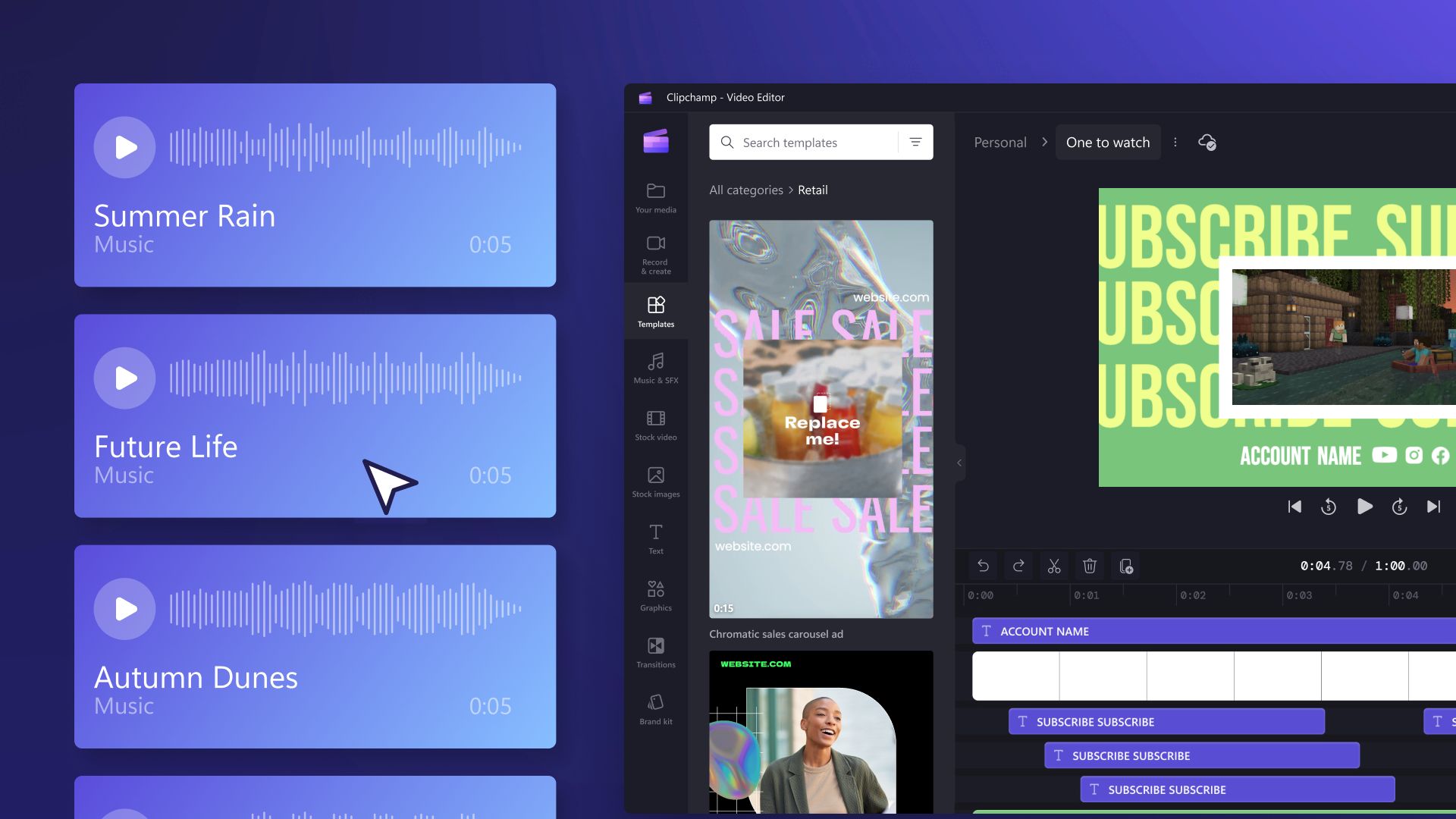Introduction
When it comes to video editing, one of the crucial elements that can truly elevate the overall quality and impact of your project is the background music. Whether you’re creating a promotional video, a YouTube vlog, or a cinematic masterpiece, finding the perfect music to complement your visuals is essential.
However, it’s important to note that using copyrighted music without permission can lead to legal issues and copyright infringement. So, how can you download music for video editing while ensuring you stay within the boundaries of the law?
In this article, we will explore various sources and methods to help you find and download copyright-free, royalty-free, and creative commons music for your video projects. From stock music websites to free music libraries and even SoundCloud, we will provide you with the information and resources you need to add the perfect soundtrack to your videos.
Before we dive into the different methods, it’s crucial to understand the importance of choosing the right music to enhance your video editing. The music you select should align with the mood, theme, and message of your video. It can evoke emotions, set the pace, and create a cohesive audio-visual experience for your viewers.
So, let’s get started on this journey of finding the ideal music for your video editing needs. Whether you’re searching for upbeat tracks, ambient melodies, or dramatic orchestral scores, we have you covered.
Finding Royalty-Free Music
When it comes to sourcing music for your video editing projects, one of the best options is to look for royalty-free music. Royalty-free music refers to tracks that can be used legally and without any additional fees after initial purchase or licensing. Here are a few methods to help you find quality royalty-free music for your videos:
- Stock Music Websites: There are several online platforms that offer a vast collection of royalty-free music tracks. Websites like Shutterstock Music, Epidemic Sound, and AudioJungle are popular choices. These platforms provide a wide range of genres and styles that cater to different video editing needs. Simply search for the desired mood or genre, listen to the preview, and download the licensed track for your project.
- Free Music Libraries: There are also websites that provide free music libraries where you can find royalty-free tracks. Websites like Bensound, Incompetech, and Pixabay offer a selection of high-quality music tracks that are free to use for personal and commercial purposes. While these libraries may have fewer options compared to paid stock music websites, they still offer a variety of genres and styles to choose from.
- YouTube Audio Library: YouTube offers an extensive audio library that contains a wide range of royalty-free music tracks. You can access it by logging into your YouTube account, going to the Creator Studio, and selecting “Create” in the top menu. From there, click on “Audio Library” and explore the different categories and genres available. You can download the tracks directly from the library and use them in your videos without worrying about copyright issues.
- SoundCloud: SoundCloud is a popular platform for emerging artists and musicians to share their music. While not all tracks on SoundCloud are royalty-free, there are many artists who provide their work under a Creative Commons license, allowing free use with proper attribution. Simply search for the genre or style you’re looking for, and explore the tracks tagged with Creative Commons licenses. Be sure to read and follow the specific attribution requirements for each song.
- Creative Commons Websites: There are dedicated websites, such as CCMixter and Jamendo, that offer a wide collection of music released under Creative Commons licenses. These licenses allow you to use the music for free, as long as you properly credit the artist. You can search for specific genres, moods, or even the type of usage (commercial or non-commercial). Always check the individual license details and follow the attribution guidelines.
By exploring these resources, you’ll be able to find a wide range of royalty-free music tracks to enhance your video editing projects. Remember to review the licensing agreements and attribution requirements for each track to ensure that you’re using them correctly.
Choosing the Right Music for Your Video
Now that you have various sources to find royalty-free music for your video editing projects, it’s important to understand how to choose the right music that will enhance your video and captivate your audience. Here are some tips to consider:
- Consider the Mood and Tone: Identify the desired mood and tone of your video. Is it uplifting and energetic, or somber and introspective? The music you choose should align with the emotions you’re trying to convey. Pay attention to the tempo, instrumentation, and overall vibe of the music to ensure it complements your visuals.
- Match the Music to the Pace: The pace and rhythm of the music should synchronize with the rhythm of your video. If your video has fast-paced editing and quick cuts, consider using music with a higher bpm (beats per minute) to create a sense of excitement and energy. For slower-paced videos, choose music that has a more relaxed tempo to enhance the mood.
- Take Note of the Genre: Consider your audience and the message of your video. The genre of music you choose should be appropriate and resonate with your target viewers. If you’re creating a corporate video, for example, instrumental tracks or ambient music might work best. For a fashion or lifestyle vlog, pop or electronic tracks might be more fitting. Remember, the music should enhance your video’s narrative, not overpower it.
- Think about Copyright Restrictions: Even though you’re using royalty-free music, it’s essential to double-check the licensing terms. Some tracks may require proper attribution, while others may have restrictions on commercial use. Be sure to read the licensing agreements and comply with any requirements specified by the artist or platform.
- Test Multiple Options: Don’t settle for the first track you find. Take the time to explore different music options and experiment with different tracks to see how they fit with your video. Play them alongside your footage and iterate until you find the perfect match. You may even find that certain sections of your video work better with different tracks, so don’t be afraid to mix and match.
Remember, the right music can significantly enhance the overall impact and reception of your video editing projects. Take the time to carefully select tracks that align with your video’s mood, message, and target audience. By doing so, you’ll create a cohesive and engaging audio-visual experience that captures the attention and emotion of your viewers.
Downloading Music from Stock Music Websites
If you’re looking for a wide selection of high-quality music tracks for your video editing projects, stock music websites are an excellent resource. These platforms offer a vast library of royalty-free music that you can purchase or license for use in your videos. Here’s how you can download music from stock music websites:
- Choose a Reliable Stock Music Website: There are several trusted stock music websites available, such as Shutterstock Music, Epidemic Sound, AudioJungle, and PremiumBeat. Select the platform that best suits your needs in terms of music genres, pricing options, and licensing terms.
- Explore the Music Library: Once you’ve selected a stock music website, browse through their music library. Most platforms categorize music by genre, mood, tempo, and other criteria to make it easy for you to find the right track. Utilize the search bar and filters to narrow down your options.
- Listen to Previews: Click on the tracks that catch your interest to listen to previews. These previews typically provide a short excerpt of the music, allowing you to assess whether it aligns with your video’s theme and desired mood. Take advantage of this feature to explore various tracks and find the perfect fit.
- Purchase or License the Music: Once you’ve found the track you want to use, it’s time to purchase or license it. Stock music websites offer various pricing options, including individual track purchases or subscriptions that provide access to a certain number of tracks each month. Choose the option that works best for your budget and video editing needs.
- Download the Track: After completing the purchase or licensing process, you will typically receive a download link or be able to access your purchased tracks in your account’s dashboard. Follow the provided instructions to download the track to your computer or external storage device. Make sure to save it in a location that is easily accessible for your video editing software.
- Read and Follow License Terms: It’s crucial to review the licensing terms for the downloaded track. Some licenses may require proper attribution in the video’s credits or description. Ensure that you comply with the licensing requirements to use the music legally and avoid any copyright issues.
Stock music websites offer a convenient and reliable way to access a diverse range of music tracks for video editing. By following these steps, you can find, license, and download the perfect music to enhance your videos and captivate your audience.
Downloading Music from Free Music Libraries
For those on a budget or looking for free options, there are several free music libraries available that offer a variety of royalty-free music tracks for video editing. These libraries provide an excellent opportunity to find high-quality music without breaking the bank. Here’s how you can download music from free music libraries:
- Choose a Reliable Free Music Library: Start by selecting a reputable free music library such as Bensound, Incompetech, or Pixabay. These platforms offer a wide range of music genres and styles that can suit various video editing needs.
- Browse the Music Categories: Explore the different music categories and genres available on the free music library platform. Most libraries categorize their tracks based on the mood, instruments used, or specific themes to make it easier for you to find the right fit.
- Listen to Previews: Click on the tracks that catch your attention and listen to the provided previews. These previews give you a glimpse into the music’s style, tempo, and overall mood, enabling you to evaluate whether it aligns with your video’s requirements.
- Download the Track: Once you’ve found the perfect track, download it to your computer or external storage device. Free music libraries typically provide a download button or link for each track. Ensure that you’re downloading the appropriate file format (such as MP3 or WAV) compatible with your video editing software.
- Review License Terms: Although these tracks are free to use, it’s crucial to review the license terms provided by the free music library. Some licenses may require proper attribution in your video’s credits or description. Follow the specific guidelines outlined in the license to ensure legal usage and avoid any potential copyright issues.
- Keep Track of the Attribution: If the license requires attribution, keep track of the necessary information such as the track title, artist name, and any additional details. This will make it easier for you to provide the proper credits in your video or video description.
Free music libraries can be a great resource for finding quality tracks without spending money. By following these steps, you can discover and download the right music to enhance your videos while staying within your budget.
Downloading Music from YouTube Audio Library
YouTube offers a convenient and extensive audio library that contains a wide selection of royalty-free music tracks. This library is an excellent resource for video editors looking for music to enhance their projects. Here’s how you can download music from the YouTube Audio Library:
- Access the YouTube Audio Library: Log in to your YouTube account and navigate to your Creator Studio. From there, select “Create” in the top menu and click on “Audio Library” in the dropdown menu. This will take you to the YouTube Audio Library.
- Browse the Music Categories: Explore the different categories and genres available in the YouTube Audio Library. You can find a diverse range of tracks, ranging from upbeat and energetic tunes to calming and atmospheric melodies. Use the filters and search bar to narrow down your options based on your video’s theme or mood.
- Preview and Select a Track: Click on a track that interests you to listen to a preview. The previews in the YouTube Audio Library provide a sample of each track, allowing you to assess their suitability for your video. Take your time and explore different tracks until you find the one that best complements your visuals.
- Download the Track: Once you’ve chosen a track, click on the download button below the audio preview. This will initiate the download process, and the track will be saved to your computer or the default location specified by your browser. Make sure to note where the file is saved for easy access during your video editing process.
- Review and Comply with the License: While the tracks in the YouTube Audio Library are royalty-free, it’s essential to review the specific terms and conditions of the license for each track. In most cases, these licenses do not require attribution, but it’s always best to double-check to ensure you are complying with the licensing requirements.
- Import the Track into Your Video Editing Software: Once you have downloaded the track, import it into your video editing software. Most editing software allows you to drag and drop audio files directly into your project timeline. From there, you can adjust the track’s placement, duration, and volume to synchronize with your video footage.
The YouTube Audio Library provides an extensive collection of royalty-free music tracks that you can easily download and use in your video editing projects. By following these steps, you can access a wide range of music to enhance your videos and captivate your viewers.
Downloading Music from SoundCloud
SoundCloud is a popular platform for musicians and artists to share their music with the world. While not all tracks on SoundCloud are royalty-free, many artists choose to release their work under Creative Commons licenses, allowing for free use with proper attribution. Here’s how you can download music from SoundCloud:
- Search for Music: Start by searching for the genre, mood, or specific artist you’re interested in. SoundCloud allows you to explore a wide variety of music styles, from electronic and hip-hop to classical and ambient. Use the search bar or browse through different genres to find tracks suitable for your video editing needs.
- Filter for Creative Commons Licenses: Once you have found a track that interests you, check if it is released under a Creative Commons license. On SoundCloud, you can typically find this information in the track description or artist profile. Look for terms like “Creative Commons” or specific licenses such as CC BY or CC BY-NC. These licenses allow for free use of the music, provided you give proper attribution to the artist.
- Listen to the Track: Before downloading, listen to the track in its entirety to ensure it aligns with your video editing vision and desired mood. Pay attention to the quality, instrumentation, and overall tone of the music to determine if it fits well with your project.
- Download the Track: SoundCloud provides a download option for tracks that are available for free use. Look for the downward arrow icon next to the track or a “Download” button on the player. Clicking on it will initiate the download process, and the track will be saved to your device. Remember to save the file in a location that is easily accessible for your video editing software.
- Read and Comply with Attribution Requirements: Creative Commons licenses often require proper attribution to the artist. When using music from SoundCloud, make sure to read and understand the specific attribution requirements for each track. This may include mentioning the artist’s name and the track title in your video’s credits or description.
- Import the Track into Your Video Editing Software: Once you have downloaded the track, import it into your video editing software. Most editing software allows for importing audio files and offers features to edit the track’s duration, volume, and placement to synchronize it with your video footage.
SoundCloud can be a great resource for finding music to enhance your video editing projects. By following these steps and respecting the licensing requirements, you can download and use music from SoundCloud legally and add a unique touch to your videos.
Downloading Music from Creative Commons Websites
If you’re looking for a variety of music released under Creative Commons licenses, there are dedicated websites that offer a vast collection of tracks for free use with proper attribution. These websites provide a valuable resource for finding unique and diverse music for video editing projects. Here’s how you can download music from Creative Commons websites:
- Choose a Reliable Creative Commons Website: Start by selecting a reputable Creative Commons website such as CCMixter, Jamendo, or Free Music Archive. These platforms host a wide array of music tracks that are released under various Creative Commons licenses.
- Browse the Music Categories: Explore the different music categories on the Creative Commons website to find tracks that match your video editing requirements. These websites often categorize music by genre, mood, or even commercial/non-commercial use, making it easier to find the perfect track.
- Listen to Previews: Click on the tracks that pique your interest to listen to previews or full versions of the music. Take the time to listen carefully and assess whether the track aligns with the mood and theme of your video editing project.
- Check Attribution Guidelines: Creative Commons licenses typically require proper attribution to the artist. Before downloading a track, review the attribution guidelines provided on the website. These guidelines will specify how you should credit the artist in your video’s credits or description.
- Download the Track: Once you’ve found a track you’d like to use, follow the provided download instructions on the Creative Commons website. This may involve clicking a download button or link, which will save the track to your computer or designated folder. Ensure that you’re downloading the appropriate file format compatible with your video editing software.
- Attribute the Track: It is essential to attribute the artist appropriately when using music from Creative Commons websites. Make sure to include the required information, such as the track title, artist name, and a link to the original track. Follow the specific attribution guidelines provided by the Creative Commons license to ensure compliance.
Downloading music from Creative Commons websites offers a wealth of options for video editors seeking unique and diverse tracks. By following these steps and respecting the licensing and attribution guidelines, you can add compelling music to your video editing projects while giving proper credit to the artists behind the music.
Tips for Properly Crediting Music in Your Video
When using music in your video editing projects, it’s important to properly credit the artists to acknowledge their work and comply with licensing requirements. Here are some essential tips for properly crediting music in your video:
- Read and Understand the Licensing Terms: Different music tracks may have varying licensing requirements, so it’s crucial to read and understand the specific terms for each track. Pay attention to whether the license requires attribution and any specific guidelines provided by the artist or platform.
- Include the Artist Name: Mention the artist’s name in your video’s credits or description. This allows viewers to easily discover and support the artist’s work. If there are multiple artists involved, credit them all accordingly.
- Include the Track Title: Along with the artist’s name, include the title of the track used in your video. This helps viewers identify the music and potentially explore more of the artist’s work.
- Provide a Link to the Original Track: Whenever possible, include a link to the original track in your video’s description or credits. This gives viewers the opportunity to listen to the full version of the music and support the artist directly.
- Specify the Creative Commons License: If you’re using music released under a Creative Commons license, mention the specific license type and any additional conditions in your video’s credits or description. This ensures clarity and transparency regarding the rights and permissions granted by the license.
- Place the Credit at an Appropriate Location: Determine the most suitable location to display the music credit in your video. This could be at the beginning or end of the video, or even as on-screen text during the portion where the music is used. Ensure that the credit is easily readable and visible to viewers.
- Follow Platform Guidelines: If you’re uploading your video to a specific platform, such as YouTube, familiarize yourself with the platform’s guidelines regarding music attribution. Some platforms may have specific requirements for crediting music in your video, so be sure to adhere to those guidelines.
- Double-Check Accuracy: Before publishing or sharing your video, double-check that the music credit is accurate and properly formatted. Review the spelling of the artist’s name, track title, and any links provided. This attention to detail ensures that the proper credit is given to the artist.
Properly crediting the music used in your video editing projects is essential to respect the rights of the artists and to comply with licensing requirements. By following these tips, you can ensure that you give proper credit to the musicians while also providing valuable information to your viewers.
Conclusion
Finding and downloading music for video editing is an important aspect of creating high-quality and engaging videos. Whether you’re looking for royalty-free music, tracks released under Creative Commons licenses, or free music options, there are a plethora of resources available to cater to your needs.
Stock music websites offer a vast selection of high-quality tracks that can be licensed for use in your videos. Free music libraries provide an excellent budget-friendly option, while the YouTube Audio Library offers convenience and a wide range of royalty-free tracks. SoundCloud and dedicated Creative Commons websites offer unique and diverse music options that can add a distinct touch to your video editing projects.
However, it’s important to consider factors such as mood, genre, tempo, and licensing requirements when choosing the right music for your videos. Ensure that you properly credit the artists whose music you use, following the specific guidelines provided by the licenses.
Remember, the music you choose can greatly enhance the overall impact, mood, and narrative of your video editing projects. Whether you’re creating a thrilling action sequence, a heartfelt emotional story, or an upbeat promotional video, the right music can elevate your visuals and captivate your audience.
By utilizing the tips and resources outlined in this article, you can confidently and legally download music that fits your video editing needs. So get out there, explore different sources, experiment with various tracks, and create videos that are not only visually stunning but also sonically captivating.







